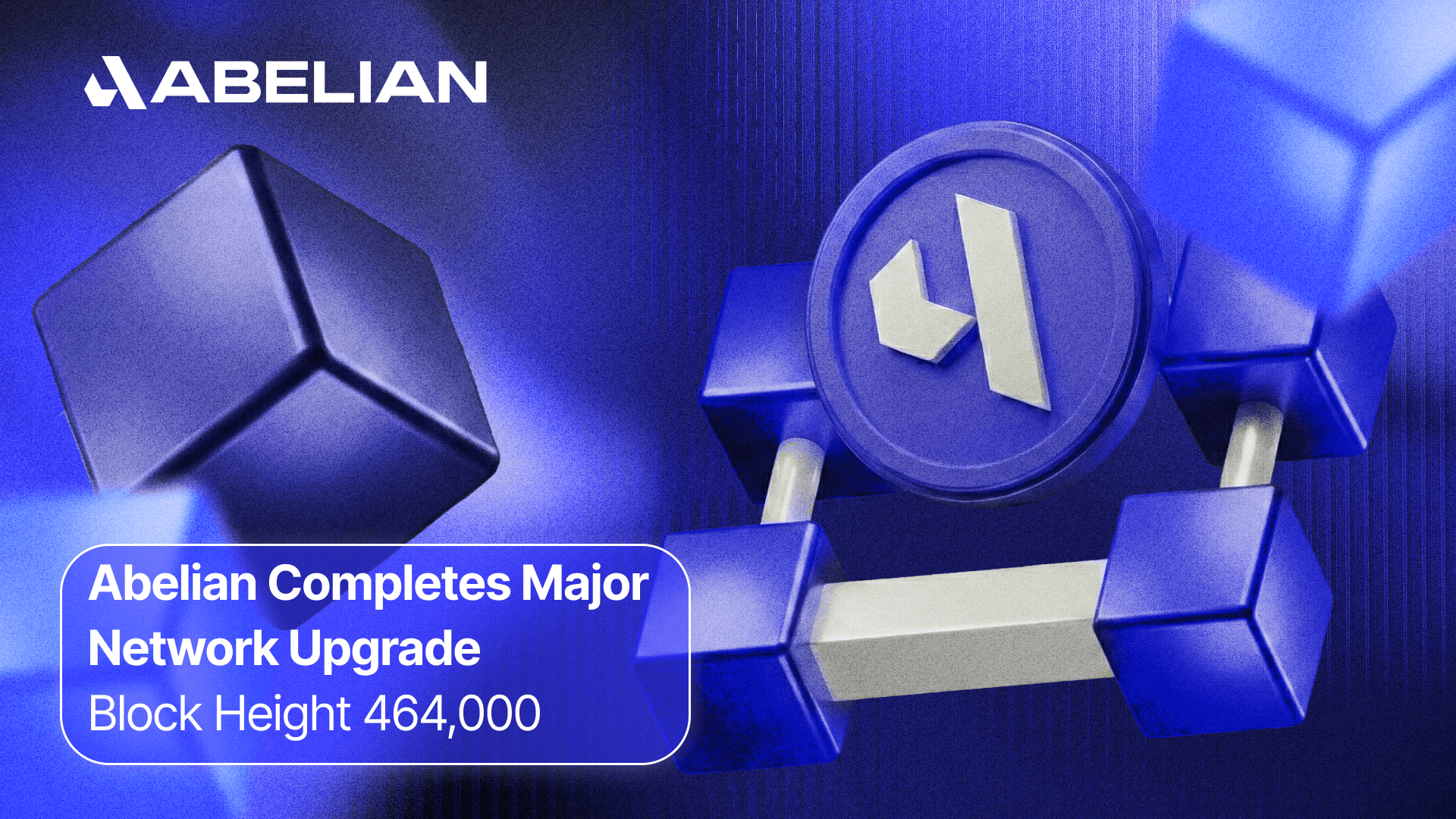Abelian Quartering – A Beginner’s Guide

In the rapidly advancing realm of blockchain technology, sustainable growth and long-term security are no longer optional - they are foundational. Abelian introduces a forward-thinking solution to these demands through Quartering - a tokenomics mechanism designed to reshape how block rewards are distributed and value is preserved over time.
More than just a reduction schedule, Abelian Quartering represents a broader economic philosophy: one that prioritizes stability, transparency, and long-term alignment between miners, investors, and developers. As we explore this mechanism’s role in extending the mining period, regulating token supply, and reinforcing network incentives, it becomes clear how quartering is poised to redefine the future of the ABEL token and its ecosystem.
Mechanism: What is Abelian Quartering?
Quartering refers to a systematic reduction in mining rewards, echoing the intent of traditional halving mechanisms but executed with greater precision and foresight. Whereas halving imposes abrupt 50% cuts at set intervals, quartering introduces a more gradual and deliberate transition. This approach is designed to minimise disruption, allowing miners to adapt over time while maintaining network stability and incentive alignment.
Evolving the Model: Quartering vs. Traditional Halving
Traditional halving mechanisms, commonly seen in cryptocurrencies like Bitcoin, involve a predetermined reduction in mining rewards, typically by half, at regular intervals. This approach aims to control the supply of new coins entering the market, thereby creating scarcity over time. For example, Bitcoin undergoes a halving event approximately every four years, reducing the block reward from to 25 BTC, then to 12.5 BTC, and so forth.
However, these abrupt changes can lead to significant fluctuations in miner incentives and market prices. When rewards are halved, miners may face immediate pressure to adjust their operations or exit the market altogether, potentially destabilizing the network. In contrast, Abelian quartering mitigates these risks by implementing a more gradual reduction in rewards. After the initial completion of 400,000 blocks, the reward will decrease from 256 ABELs to 64 ABELs, ensuring that miners can adapt over time, fostering a smoother transition for all participants in the ecosystem.
Economic Model: Tokenomics and Supply Strategy
The tokenomics model behind ABEL is designed to foster a sustainable and resilient ecosystem by adopting a novel quartering mechanism - rather than the conventional halving approach - and by extending the overall mining period. This framework enhances supply predictability, preserves scarcity, and reinforces long-term alignment between the network, miners, and investors.
Notably, this marks the first formal introduction of the concept of "quartering" within blockchain discourse, reflecting Abelian’s commitment to both innovation and thoughtful economic design. By front-loading mining incentives and gradually increasing the difficulty over time, the model strategically encourages early participation while ensuring long-term network integrity. As supply tightens and demand continues to rise, market dynamics are expected to favour upward price pressure in a more organic and sustainable way.
Quartering Rather than Halving
The initial reduction in block rewards from 256 to 64 ABELs represents a deliberate and measured transition that smooths the shift for both miners and investors. Rather than an abrupt halving, this quartering mechanism offers a more gradual recalibration of incentives, allowing participants to adapt without disrupting ecosystem stability.
Importantly, the total token supply remains capped at 225.2 million ABELs, reinforcing the network’s built-in scarcity and strengthening long-term investor confidence. This controlled issuance not only maintains deflationary pressure but also signals a commitment to disciplined monetary policy - an increasingly critical factor in an evolving digital asset landscape.
Doubling the Era Duration
Beginning with the second era, the block duration will expand from 400,000 to 800,000 blocks, extending the mining cycle to approximately 6.5 years. This deliberate pacing provides miners with a more generous timeframe to adjust to evolving reward dynamics, fostering a sense of continuity and operational certainty.
As a result, the overall mining lifecycle is extended from 32.5 years to an impressive 62 years - significantly enhancing the network’s long-term stability while mitigating inflationary pressures.
The initial reduction in block rewards - from 256 to 64 ABELs upon the completion of the first 400,000 blocks - marks a thoughtfully calibrated transition. It ensures that the shift in token issuance is gradual, equitable, and aligned with the interests of all network participants.
As the community prepares for the upcoming quartering event, more details are available in the tokenomics blog.
Network Impact: ABEL Quartering
The introduction of ABEL Quartering marks a pivotal advancement in the project’s economic architecture, with far-reaching implications for the token’s long-term value and network stability. By adopting a more measured and deliberate reduction in block rewards, Abelian mitigates the sharp shocks often associated with traditional halving events, thereby reducing potential market volatility and enhancing predictability.
As the quartering event approaches, participants can anticipate a more stable and transparent environment - crucial for fostering trust, deepening community engagement, and encouraging institutional and retail adoption alike. This engineered stability is not incidental; it is a core component of Abelian’s philosophy of sustainable growth and responsible decentralisation.
Beyond its impact on miners, the quartering cycle also delivers tangible benefits to investors by introducing a clear, reliable framework for forecasting token emissions. With a well-defined reward schedule, market participants are better equipped to assess future supply dynamics, allowing for more strategic, data-driven decision-making.
Ultimately, this carefully structured approach to token issuance reinforces long-term confidence in the ABEL ecosystem, laying the groundwork for a resilient, scalable, and enduring digital asset economy.
Advantages of the Quartering:
- Total Supply Unchanged: The total supply remains around 256 ABELs.
- Extended Mining Duration: The mining period will increase from 32 years to 64 years, allowing more time for miners to participate.
- Longer Eras: Each era will now consist of 800,000 blocks rather than 400,000.
Long-term Benefits for Miners
For miners, the advantages of the quartering mechanism are substantial. The gradual reduction in rewards allows miners to optimize their operations and make necessary adjustments without facing the existential threat of sudden reward drops. This stability can lead to increased miner retention, contributing to a more secure and robust network.
Furthermore, miners can take advantage of the extended mining duration to refine their strategies, invest in more efficient hardware, and engage in community-building activities. By fostering a collaborative environment, miners can share insights, tools, and techniques that can enhance overall network performance.
Looking Ahead: The Future of ABEL Token
As the principles of quartering take hold, they will play a crucial role in maintaining the integrity and value of the ABEL token throughout its mining period and beyond. With a commitment to sustainability and security, this project is paving the way for a more stable future in the blockchain space.
By embracing this innovative approach, the community aims to create a resilient ecosystem that benefits all participants. The long-term vision is to ensure that the future of the ABEL token remains bright, with a stable and growing user base.
In conclusion, Abelian quartering represents a significant shift in the way blockchain ecosystems manage rewards and tokenomics. The gradual and measured approach to reward distribution not only enhances stability but also fosters trust and encourages broader adoption of the ABEL token. As the community moves forward, the impact of quartering will be felt across the network, contributing to a more sustainable and secure blockchain ecosystem. By prioritizing the needs of miners and investors alike, Abelian is set to thrive in the competitive landscape of cryptocurrency.
About Abelian
Abelian is a quantum-resistant blockchain infrastructure which enables digital gold 2.0 and empowers the post-quantum crypto ecosystem. Learn more about the quantum-resistant Abelian blockchain & $ABEL Tokenomics at our documentation page.
Abelian welcomes feedback on technological developments and upcoming updates. Join us, engage in discussions, and stay informed through our social media and community channels. For more details, visit our Linktree: https://linktr.ee/officialpqabelian
Abelian is building the foundation of a Post-Quantum world
Abelian is a Layer 1 blockchain engineered to withstand quantum threats. NIST, National Institute of Standards and Technology, has already approved multiple lattice-based cryptographic algorithms for quantum-resistant encryption and digital signature. With lattice-based cryptography, multi-tier privacy, and robust decentralization, Abelian ensures your digital assets to remain secure, private, and future-proof.

Join the race to quantum resistance
Abelian powers the next-generation Layer 1 blockchain, designed to protect your transactions, assets, and data against adversarial quantum attacks.

